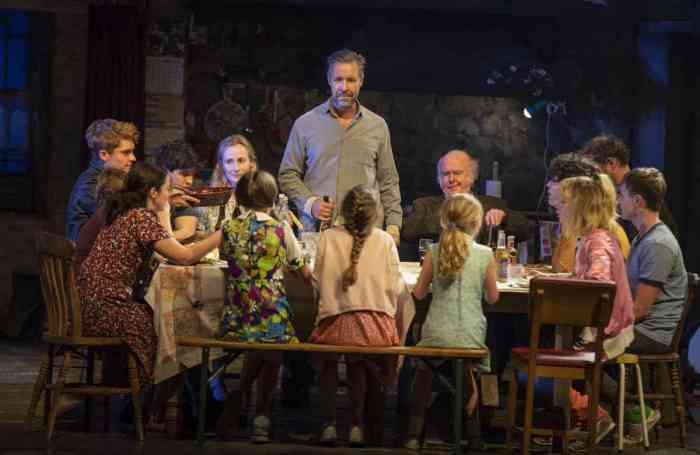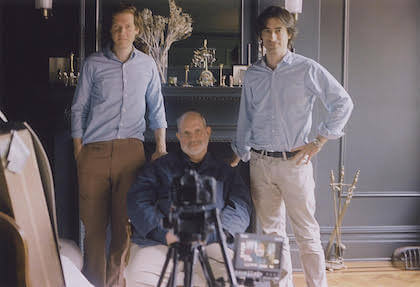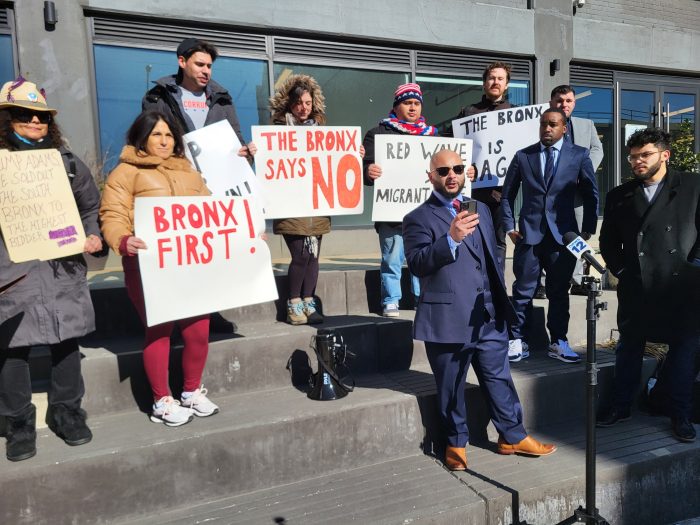Amy Seimtetz and Shane Carruth in Carruth’s “Upstream Color.” | ERBP FILM
“Upstream Color” defies so many of the rules of conventional filmmaking that it’s a challenge to write about. It falls halfway between standard narrative work and the completely non-narrative avant-garde.
Shane Carruth’s work is so daring that it’s not easy to finance either. It took him nine years to make his follow-up to his 2004 debut, “Primer,” even though much of the media coverage of that film focused on its extremely low budget. “Upstream Color” looks slicker, but it was shot on a consumer-grade video camera. Rather than try and sell such an unusual film to a distributor, Carruth is distributing it himself. On his website, at upstreamcolor.com, you can even buy vinyl copies of the soundtrack, composed by the director, together with paperbacks of Henry David Thoreau’s “Walden.”
Carruth’s strategies recall David Lynch’s self-distribution with “Inland Empire,” and Lynch is one of the few prominent American directors whose work similarly straddles the mainstream and avant-garde. Terrence Malick is another, particularly with “Tree of Life.”
Shane Carruth returns to the screen with mix of storytelling and non-narrative experimentalism
“Upstream Color” doesn’t come out of nowhere, and can be considered in the context of films like Gaspar Noé’s “Enter the Void” and all of Apichatpong Weerasethakul’s work — which tend to mix non-narrative visual exploration with surreal storytelling — as well as Lucien Castaing-Taylor and Véréna Paravel’s “Leviathan,” a documentary about fishing. “Enter the Void” alludes to psychedelic drugs, with which Noé admits to experimenting. Carruth’s film doesn’t give off quite the same vibe, but it does pick up where the experimentation — of all kinds — of the late 1960s and early ‘70s ended. A science fiction film of a very eccentric kind, “Upstream Color” seems to come from an alternate universe where “2001: A Space Odyssey” and Andrei Tarkovsky’s “Solaris” are more influential than “Star Trek” and “Star Wars.”
Kris (Amy Seimtetz, a filmmaker herself) is kidnapped and forced to ingest maggots. Her kidnapper gives her ice water, which becomes her sole source of sustenance. The maggots crawl underneath her skin. She stabs at herself to try and remove them. The kidnapper hypnotizes her into giving him money but eventually leaves her to return to the real world, after she has a mysterious exchange with a pig. Meanwhile, a soundman walks around with a microphone, headphones, and small sampling keyboard, rubbing a metal bar across the decrepit objects he finds in rural locales. When he discovers a pig farm, he becomes ecstatic. Kris meets Jeff (Carruth) and falls in love, although the two seem to have holes in their memories. The film eventually abandons dialogue — and, for the most part, narrative — in its final third.
In one sense, Carruth is a canny businessman — he makes films that demand multiple viewings. “Primer” was nearly incomprehensible on a single viewing, although I didn’t find it seductive enough to want to see again. “Upstream Color” is far more visually attractive. In terms of narrative, there seems to be something going on here, but it’s mighty elusive. Carruth is working in terms of primal visual imagery — animals, earth, and water.
All this might seem a bit silly if Carruth weren’t also a masterful filmmaker. The film’s overlapping sound design is stunning. At one point, Kris and Jeff continue an argument through several different locations, with the sound crossing from shot to shot seamlessly. He’s a virtuoso with match cuts too. The image of Jeff carrying a bundle of CDs followed by a cut to Jeff carrying a tray of food in the exact same position is unforgettable. The film turns into a sensual flow of sights and sounds.
“Upstream Color” brings avant-garde director Nathaniel Dorsky to mind, particularly in the way many of its images, taken from odd angles and edited quickly, seem to have been snatched from reality. Unfortunately, Dorsky may be best known for having one of his shots lifted for Sam Mendes’ “American Beauty.” Is Carruth guilty of the same sort of appropriation? I don’t think so. He’s only a bit less marginal than a filmmaker like Dorsky and, unlike a talented hack like Mendes, he’s a genuine visionary.
Ultimately, what is “Upstream Color” about? On a single viewing, that’s impossible to say. The second third, in which Kris and Jeff argue about whose memories belong to whom, offers the most clues. It depicts a world in which people are torn between slavery of various sorts — apart from Kris’ kidnapping, Jeff alludes to drug addiction in his past — and a very tentative promise of true freedom. Narrative obscurities aside, does this world sound familiar?
UPSTREAM COLOR | Directed by Shane Carruth | erbp Film | Opens Apr. 5 | IFC Center | 323 Sixth Ave. at W. Third St. | ifccenter.com









